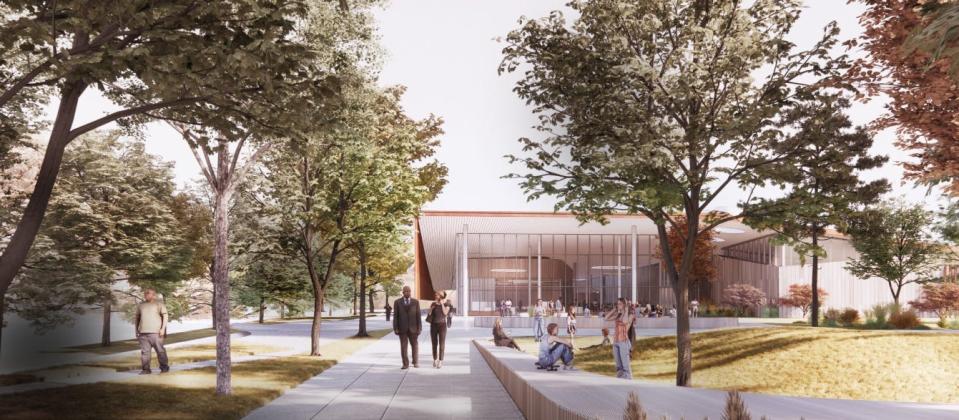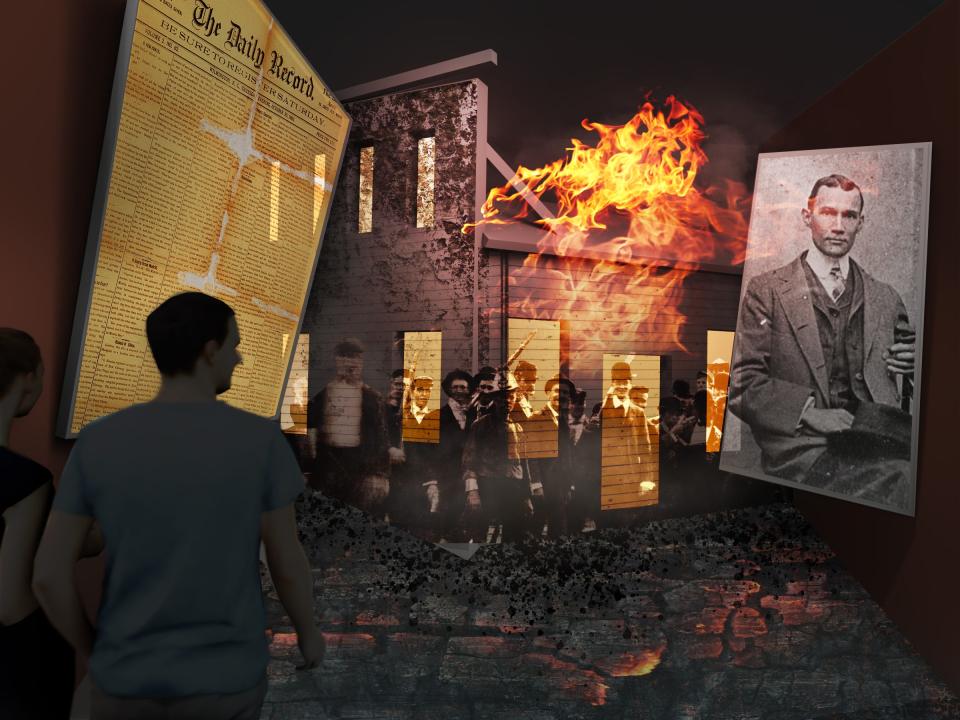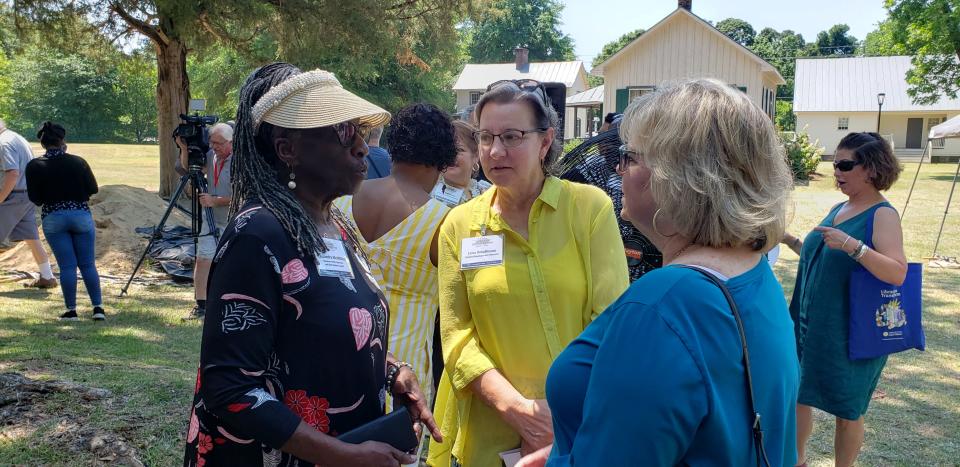Fayetteville center will highlight 1898 Wilmington massacre: 'You are going to be amazed'
A planned History Center on the Civil War and its aftermath will make a central element an immersive exhibit on the 1898 Wilmington Massacre. A center official says the dramatic experience could prove too intense for some guests, who will be offered another option to learn the history of what some historians believe is the United States’ only coup d’etat.
Leisa Greathouse, a content development historian on the N.C. History Center on the Civil War, Emancipation & Reconstruction, said a member of her team told her he would not take his young son through the immersive experience.

“We created a bypass,” she told people at a meeting earlier this month for Organizing Against Racism: Cumberland County. “You will still get the exact same information but one will be going through reading panels, and the other you will be walking through Wilmington.”
More: Pitts: Juneteenth lecture, as Civil War, Emancipation, Reconstruction center debuts new images
Marc Barnes, a spokesman for the center, promised of the Wilmington theater: “You are going to be amazed. It is going to flat blow you away.”
Spokesman: Construction to start soon
The 55,000-square-foot exhibit space is to be the main component of the $80 million History Center, which replaces the Museum of the Cape Fear in the state museum system. The center, located on Arsenal Avenue, also includes a History Village and the ruins of the Arsenal, a Civil War site that is listed on the National Register of Historic Places.
The completed center is scheduled to open in 2027. Barnes said he expected construction to start soon.
“I think it’s accurate to say within the next about a month or so there’s going to be construction activity at the site,” he said.
Initial work will focus on building a pavilion and a boardwalk that will connect to the ruins, he said. Workers will build out a parking lot and other features before moving on to construction of the main building, which he expects to start by spring.
Wilmington Massacre: Correcting the record
I heard Greathouse’s presentation, and I am excited to hear about the plans for the Wilmington exhibit. In telling the story of the massacre, the History Center is correcting an oversight made by generations of textbooks and media coverage of the war in North Carolina.
On Nov. 10, 1898, an armed mob of white supremacists — whipped into a frenzy by Southern Democrats over an anti-lynching editorial — burned down the Black newspaper in Wilmington and tore through the Black community. Sixty people died and the mob overthrew a local government that included both Black and white elected officials. Thousands of Black residents fled the city.

Historians recognize the event as a defining moment in the South’s violent pushback against Reconstruction — the federal process intended to extend more rights to Black Americans in slavery’s aftermath. What would follow is decades of lynchings and other terrorist acts to roll back Black people’s voting rights and impose Jim Crow segregation.
Two years later, “the North Carolina legislature effectively stripped African Americans of the vote through the grandfather clause and ushered in the worst of the Jim Crow laws,” writes the Zinn Education Project, a national effort focused on a more accurate and complex view of history.

The key role the Wilmington massacre played in national and state history, with effects into the present, should have always been part of our curriculum on state history, starting in fourth-grade classes. That it wasn’t in all our textbooks is an oversight at best, and more likely, a whitewash.
Greathouse said: “In the 1880s and 1890s, they didn’t try to hide their words,” she said. “They wore it proudly.”
Someone listened during the public meetings
I have been at multiple public meetings over the years for the History Center and have heard lots of viewpoints. These include two meetings where members of the public got to see initial design plans from representatives of the exhibit design firm Eisterhold Associates Inc. out of Kansas City, Missouri, and to give their input.
More: Pitts: Whose story? Residents at forum for Fayetteville Civil War center ask questions
In the meetings I attended, one thing that clearly emerged is many people did not want a museum dedicated only to the Civil War and certainly did not want one devoted to Rebel glories. They wanted one that tells the facts.
The floor plan Greathouse presented makes me think Eisterhold and the center’s team doing the programming listened. The firm is familiar with designing exhibits that deal with the country's difficult racial history, including for the International Civil Rights Center & Museum in Greensboro and the Rosa Parks Museum in Montgomery, Alabama.
An arch that spans the center floorspace concerns emancipation and how it operated in the antebellum period before slavery ended, including enslaved people who bought their freedom or who ran away and the role of manumission societies, Greathouse said.
“In North Carolina, the abolitionists were the Quakers in the western piedmont of North Carolina,” she said.
A cabin where an enslaved family would have lived will occupy one corner of the museum.
Greathouse said the cabin is "modeled after a slave cabin in Wilson County called the Boykin Cabin, so we will be using those exact dimensions.”
She said the content team for the center was going to submit its comments this month to Eisterholdt on the plans.
"They will be here in February to review those comments with us," she said.
Regular lives
The museum is focused on the regular lives of both soldiers and civilians with a detailed view of what was happening in our state, for example, the surrender at Bennett’s Place in Durham, the largest surrender of the war.
“If you are enslaved in North Carolina, if you are a soldier from North Carolina, where the war ended for you was at Bennett Place on April 26, 1865,” Greathouse said.
Other exhibits and panels will tell the story of Abraham Galloway, a formerly enslaved man, who served as a Black spy for the Union; the impact in North Carolina of the Reconstruction Amendments — the 13th, 14th and 15th amendments to the Constitution; and the role of the 5,000 North Carolinians who joined the Union Army, to include 2,000 formerly enslaved people; and the role of women and their efforts to get the vote.
“We did have large communities of free people of color near, so we’re going to be talking about them,” said Cheri Todd Molter, who is collecting stories from across the state to inform center programming. She said freedom for Black people in the state “itself was questionable and shaky. It was not ‘really free' because anything could take it away at any given moment.”
Myron B. Pitts can be reached at mpitts@fayobserver.com or 910-486-3559.
This article originally appeared on The Fayetteville Observer: Fayetteville History Center planning intense exhibit on Wilmington coup

